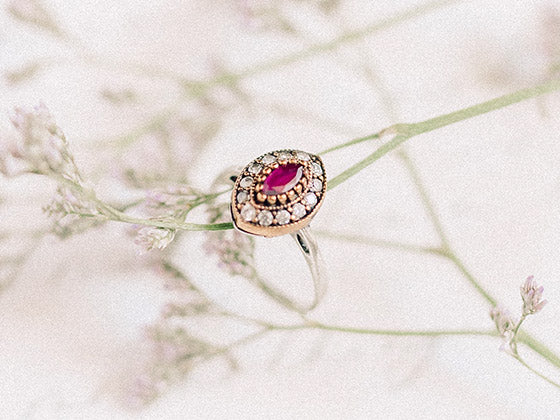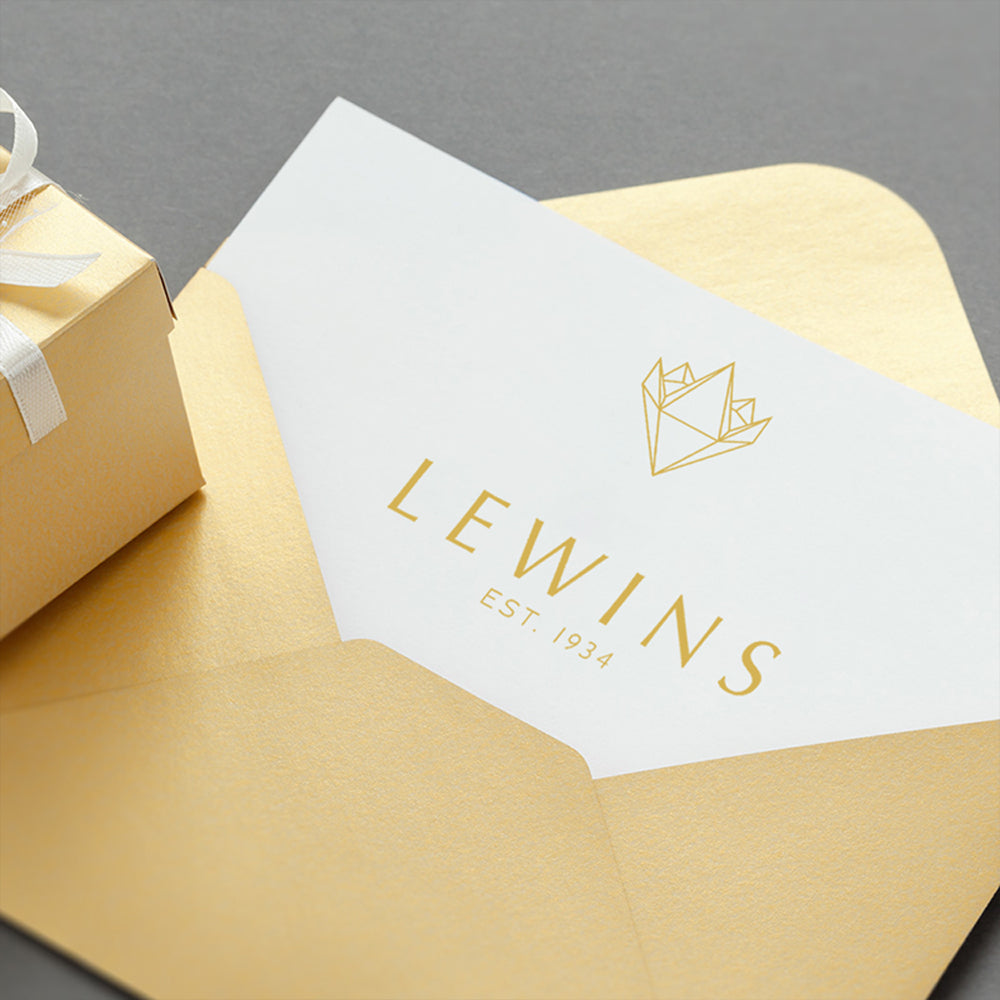This tie chain is crafted in 9ct yellow gold and will make the perfect accessory to any man’s attire. The curb link chain suspends a bezel set cubic zirconia, which offers a contemporary style, along with a button hole hook fitting. Place the hook over the shirt button and thread the tie through the chain link, the cubic zirconia charm will hang in the centre.
Material: 9ct Yellow Gold
Brand: Lewins Vintage
Finish: Polished
Fitting: Chain & Hook
Anniversary: Gold - 1st, 50th
Dimensions: apx. 107mm (L) x 10mm (W)
Weight: 1.48 grams
Condition: Very Good
Period: Estate, Late 20th Century
Hallmark: The standard mark, “375”. The assay office mark of Birmingham Import. The date letter mark “P”, indicating circa 1989. The maker’s or sponsor's mark, unknown.
Jewellery Odyssey:
The Tie Bar, is a functional and minimalistic accessory. The development of the tie bar, came years after the evolution of the necktie.
In the 17th century, the political and religious conflict of the “Thirty Years’ War” encompassed various countries, across central Europe. During this war, King Louis XIII of France employed Croatian mercenaries, to help his cause. Inspired by their style, King Louis became fascinated with the knitted, fabric scarves worn around their necks. Influenced by this comfortable, stylish and functional accessory, it became a very popular fashion accessory, at royal French gatherings. The neckties were named “La Cravate” in honour of the Croatian soldiers. Consequently, the cravat soon transcended across many high societies of European countries, and evolved throughout the following centuries. Whilst there were many different ways of tying it, neckties represented a smart dress code and became a symbol of royalty and class.
In the late 19th century, the light fabric neckties were often tucked into waistcoats and Victorian stick pins were used, to fashionably hold them in place. The development of the modern tie that is worn today, was created by a New York tailor named Jesse Langsdorf. Langsdorf changed the structure of the tie, by cleverly cutting the fabric at 45 degree angles, into three separated segments and sewing it back together. When knotted the Langsdorf tie would lay flat. During the 1930s, the “Windsor Knot” fashioned by the Duke of Windsor, became a popular way of fastening the tie, to create an extra-wide knot. During this era of society, waistcoats were not always worn. It paved the invention of the tie bar in the form of slides and clips, to securely hold the tie to the shirt. The tie bar became a gentleman’s staple accessory.
Gem Lore:
Cubic Zirconia - is a synthetic gemstone made from a composition of zirconium dioxide and in its colourless form, is most often used as a simulant for diamonds. Cz’s possess the optical effect of fire more strongly than diamonds, which is the ability of a material to split light into spectral colours. The artificial gemstone can be made in a rainbow of colours from: yellow, orange, red, pink, purple, violet, blue, green and brown. The modern period, which took place between the 60’s and 80’s, saw the dawn of a hybrid collection between fine and costume jewellery. When artificial gemstones were married together with precious gemstones and metals, making jewellery more affordable for everyone to wear.
Currently, there are no standard bespoke alterations, available for this item. However, if you have a question regarding an alteration you wish to make to the item, please let us know. You can either fill out the enquiry form below, or contact us directly. We will see if we can help to make any provisions for your request, or advise you further.
Jewellery Care Precautions:
Avoid direct contact with: perfume, lotions, skincare, hairspray / other chemicals. Remove, your jewellery: when showering, swimming (as both chlorine and saltwater will react with metals), washing your hands / using hand sanitisers, before going to bed or when participating in physical activities (going to the gym, exercising, gardening, housework etc….).
Beware, metals may tarnish over time due to oxygen contact and natural body oils. Prevent items from being exposed to moisture and direct sunlight, for long periods. Store jewellery in a dry place away from humidity, in a pouch/jewellery box and keep each piece separated from each other. Care, for your jewellery by cleaning with a soft dry cloth.
Yellow Gold:
Gold as an element, in its purest form will not tarnish, but gold used in jewellery has been alloyed with other metals, to increase durability. These metals have properties that when in contact with oxygen, chemicals, oils or other substances - will result in a surface tarnish or damage and corrosion. Even the pH level of you skin and the natural oils it produces, can tarnish your gold jewellery.
To prevent your gold jewellery from tarnishing or even disintegrating, avoid exposure to household chemicals, bleaches, toothpaste, baking soda and other cleaning abrasives. Wearing jewellery in places where perfumes, hairsprays, body lotions have been applied on your body, will increase tarnishing. Wear your jewellery after the products have been applied. To clean your gold jewellery, use a mild soap with warm water and dry with a soft cloth. For professional cleaning, our workshop can polish your jewellery back to life.










 Contact Us
Contact Us







